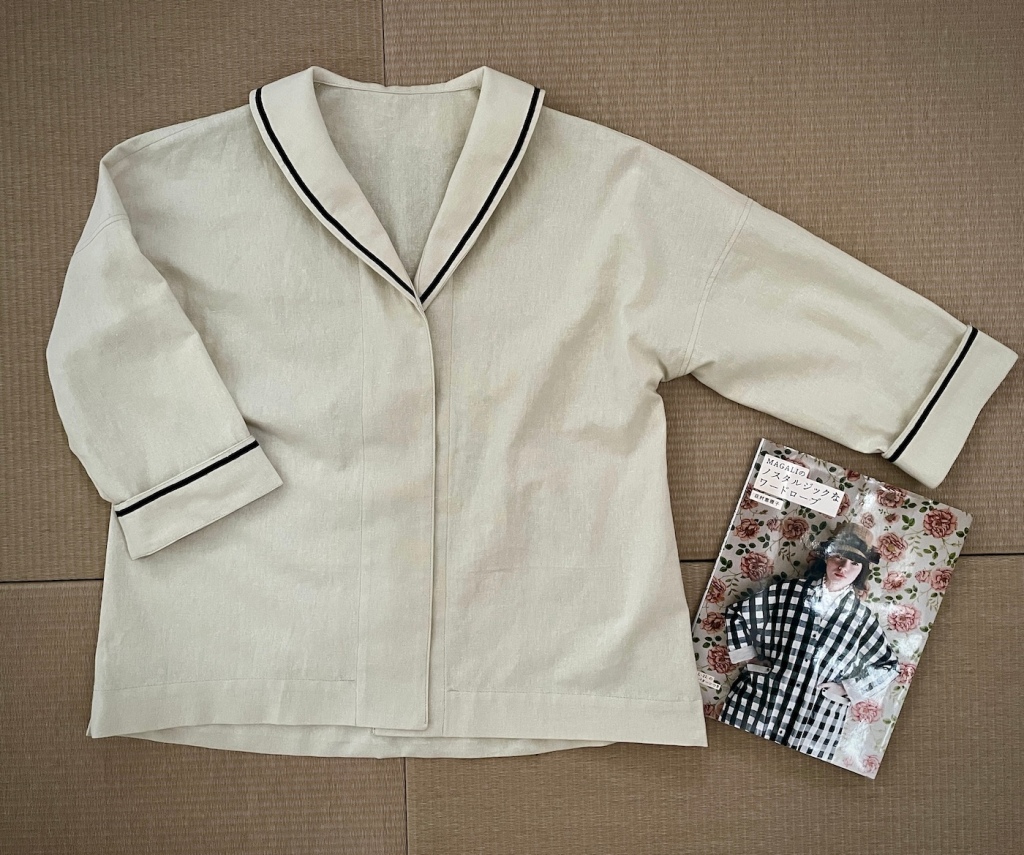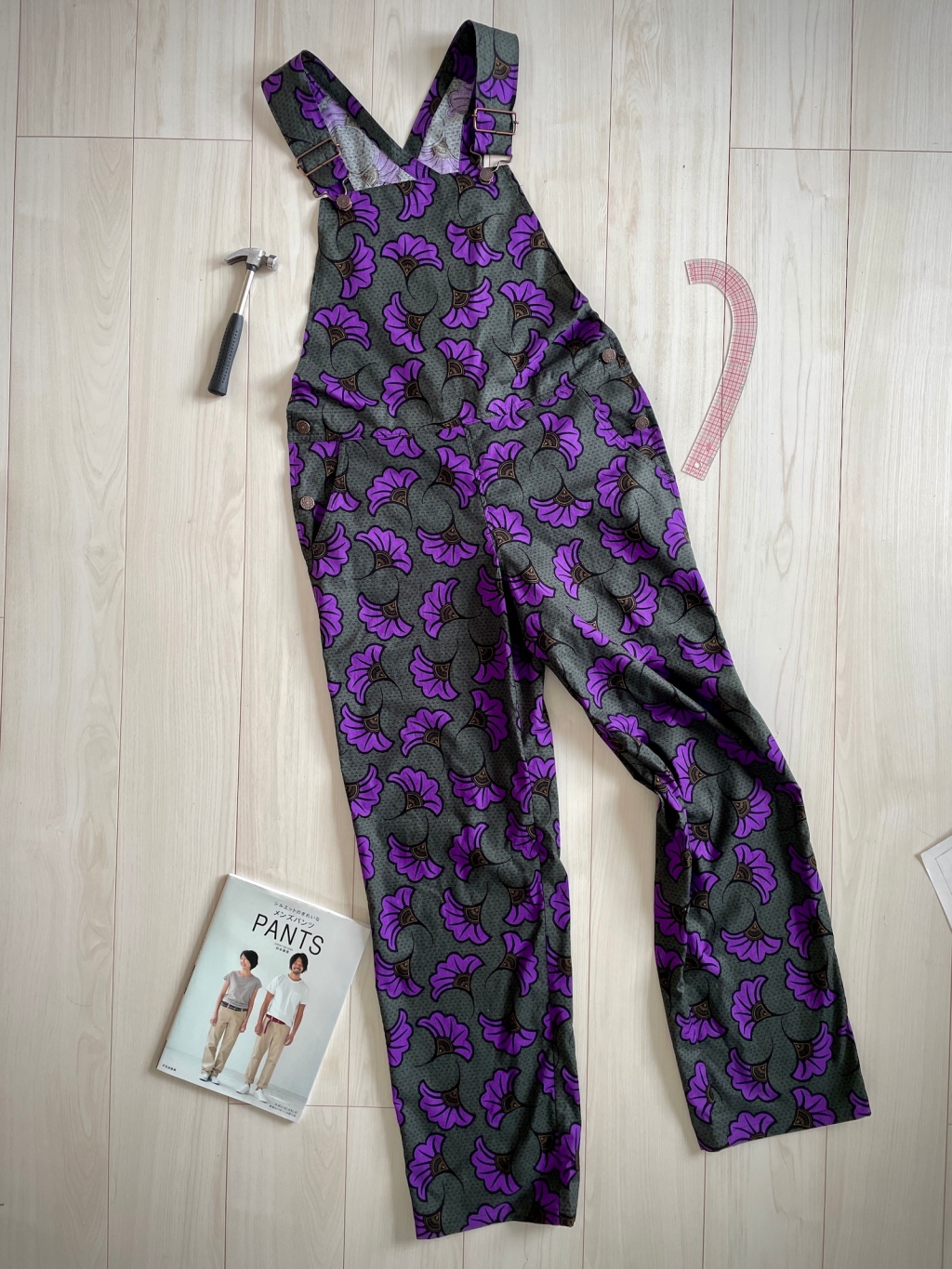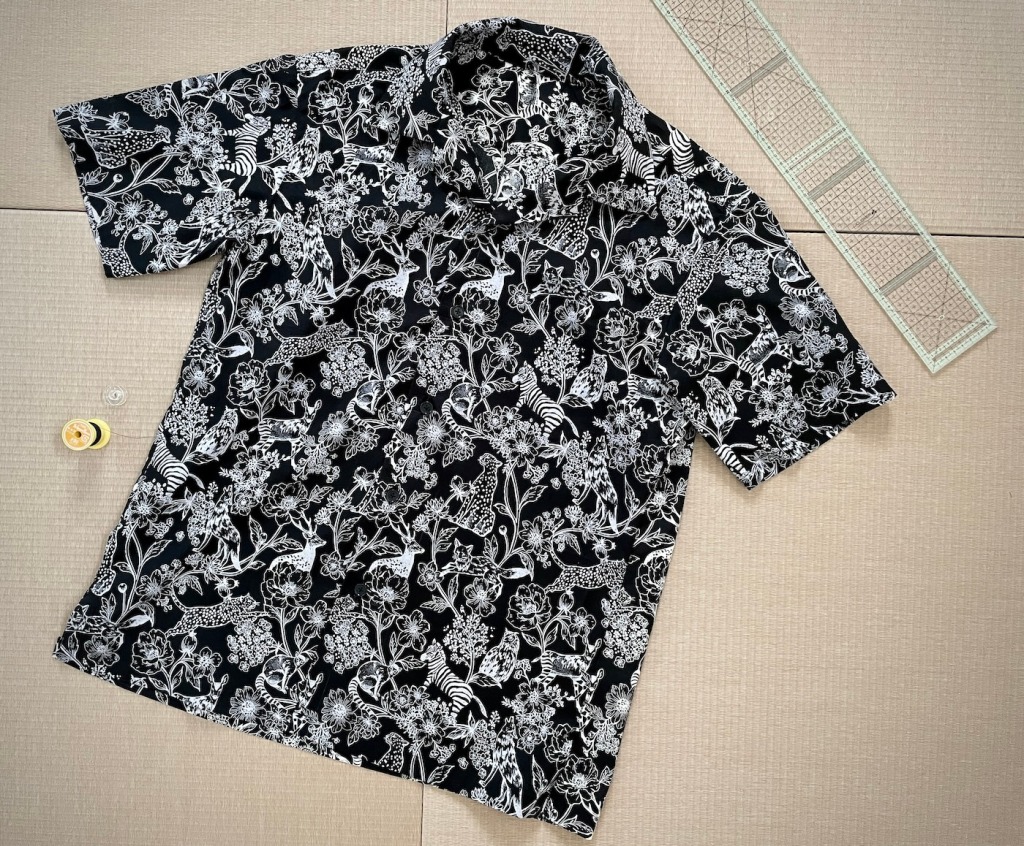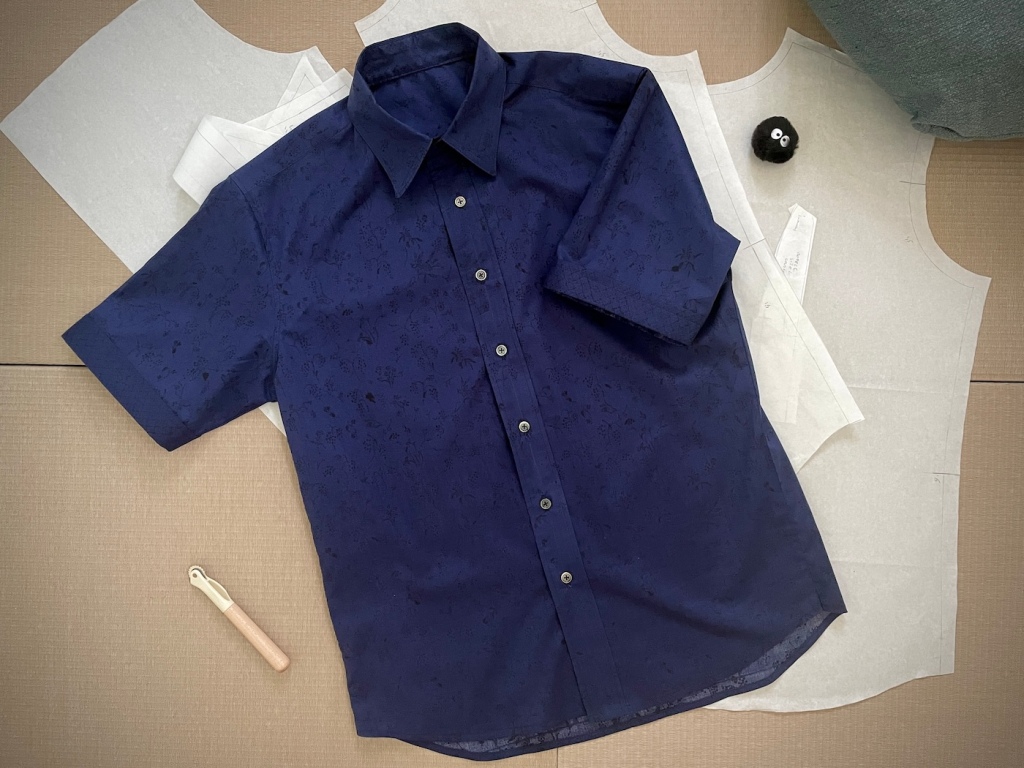It has been a while since the Panda wanted to make a tie. He has the pattern from the book パタンナー金子俊雄の 本格メンズ服 by 駒場 健太 and even bought recently a broad print at Otsukaya. However, after careful consideration, he admitted that broad is not very suitable to make such an item so he used it as a lining for the Shawl jacket.
Choosing the Perfect Kimono for a Tie
He was then in search of a fabric for the necktie, and one day, at our local Department Store, was held a bazar with shops that were selling kimono remake articles and second hand kimono – the shop is Akariya from Kyoto. One in particular caught his eye and after a few days of thinking, he went back and bought it. What best than silk to make a tie, especially this beautiful blue pattern one.

It is a a great condition, 100% silk, almost as new and costed 3300 yens. He went to the dry cleaner by they advise him to wash it himself at home since it will be used for a remake. Apparently, they apply some kind of treatment for regular kimono so it is not recommended for those that are up-cycled.


Taking the Kimono Apart
He looked up information in Japanese and found one video in particular that was helpful and gave many advice about how to unstitch and wash kimono for such a use.
On one very rare sunny day, he hang it to dry outside on our balcony, then he unstitched it starting from the collar.


It was very interesting to see how the kimono was constructed, as even for rounded corners or at the collar, the rounded shape was achieved by folding, like Origami, no cutting, no curve.




The sewing was obviously by hand, very meticulous indeed, with basting thread left in the lining and matching silk threads were used each time. There were knots at regular intervals probably to secure the stitched.


And here we are… from a beautiful kimono to a pile of silk fabric of 35cm wide.


Washing the Silk
He threw each pile of the same colour in the washing machine, using the delicate program and Pristine delicate powder detergent and alcool vinegar in the softener part. He hang them to dry in our bathroom, in Japan, there is usually a bar for such a use and a blower just above.
The fabric smelled strongly like very old clothes (or dirty hair…) at first when wet but the odour almost disappeared when dried. The fabric dried very quickly and survived the washing machine!

Pressing the Silk Pieces
The Panda tried 2 methods: the first one : applying a cloth between the humidified silk and the iron and pressing. The second one, which was adopted, was to humidify the silk with a mist spray and carefully and slightly sliding on the fabric directly.
The spray mist bottle, bought at Seria (100yen-shop) turned out to be very convenient, much better than a normal spray bottle.

Usable fabric
Width x Length in cm
- Orange:
- 38 x 61 (x4)
- 19 x 94 (x2)
- and a few small pieces
- Cream
- 38 x 220 (x2)
- 38 x 102 (x2)
- 19 x 175 (x1)
- 19 x 61 (x2)
- Navy
- 38 x 330 (x2)
- 19 x 150 (x2)
- 19 x 210 (x1)
- 19 x 90 (x1)
- 38 x 104 (x2)
In the Next Episode:
We will discover what the Panda made from this beautiful Japanese Traditional Silk





